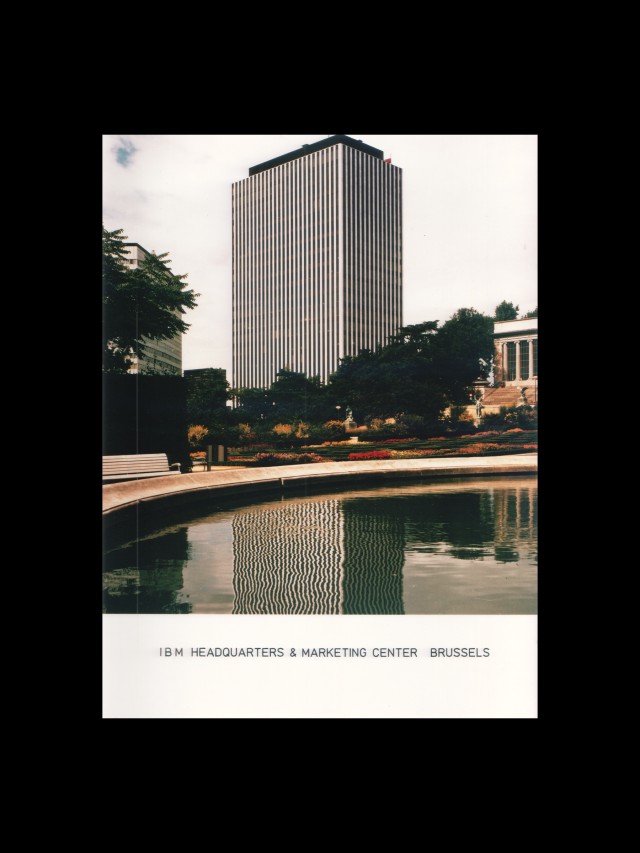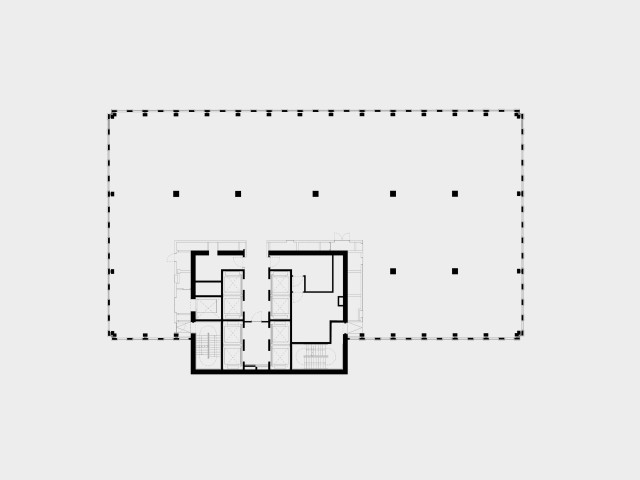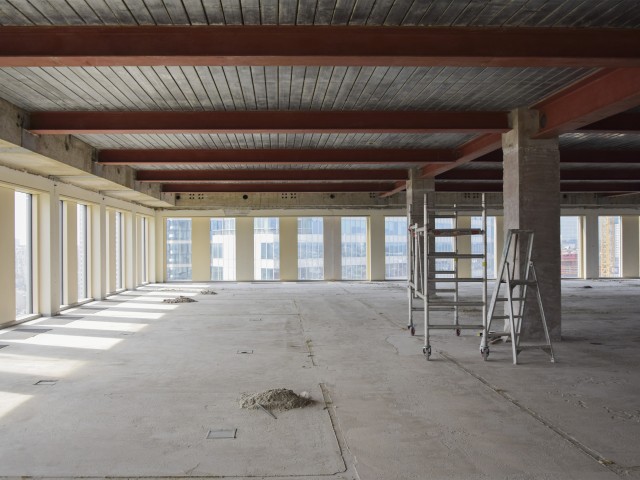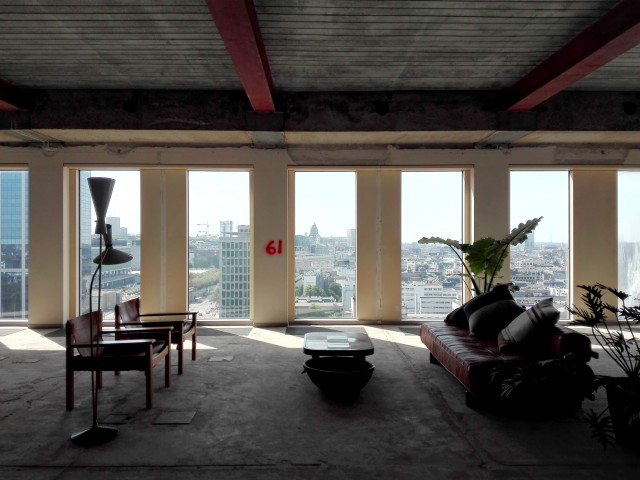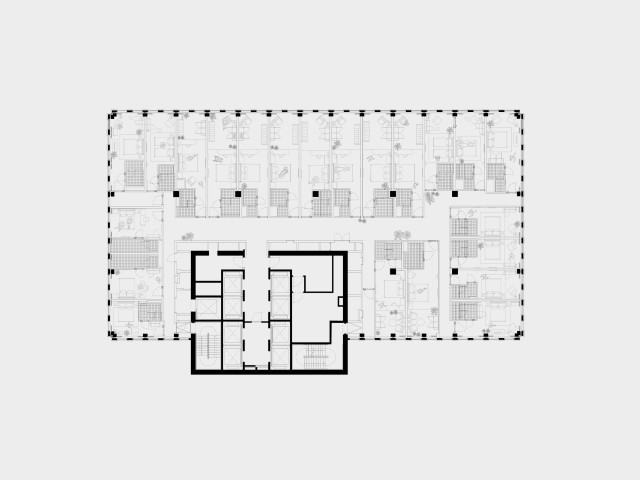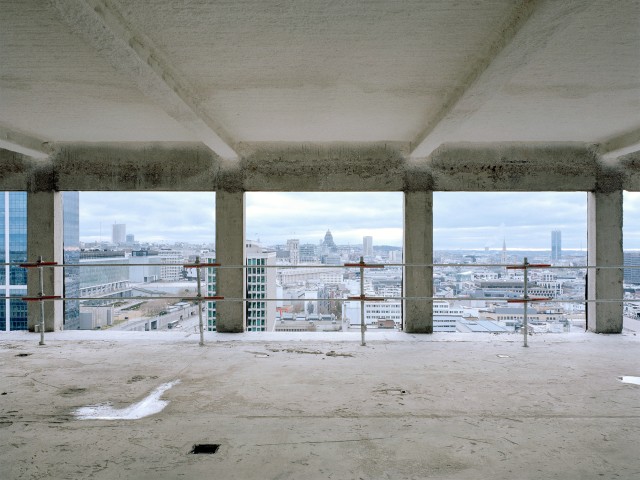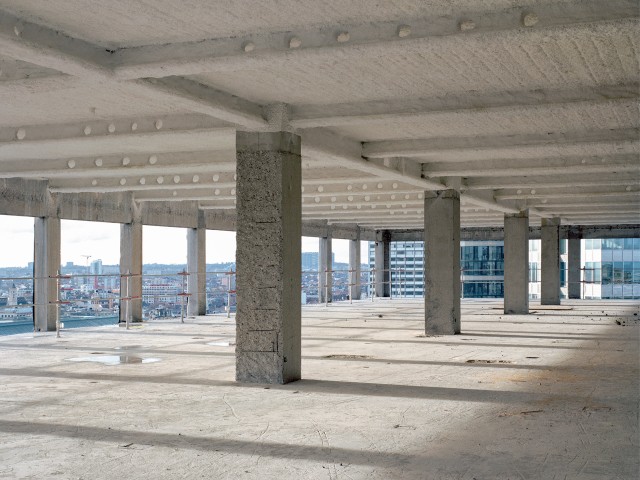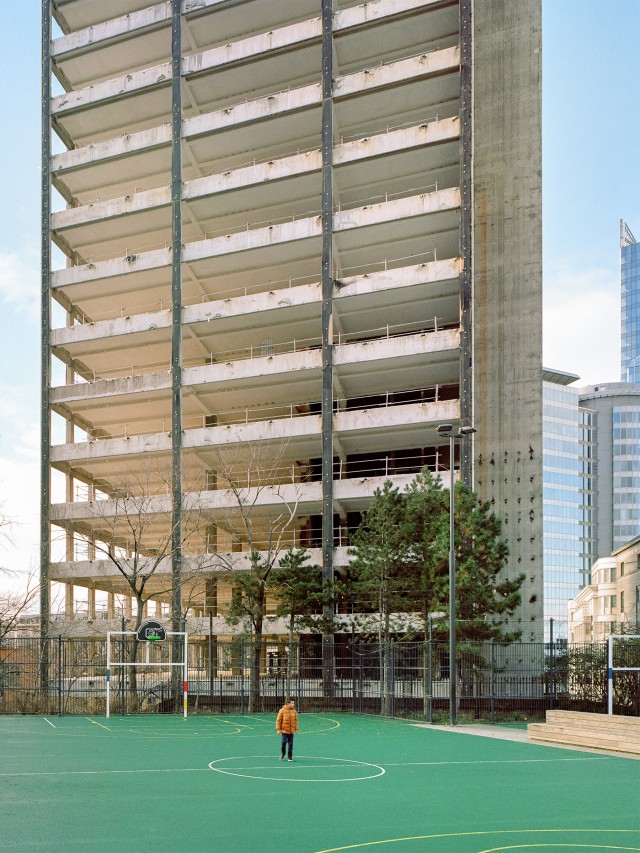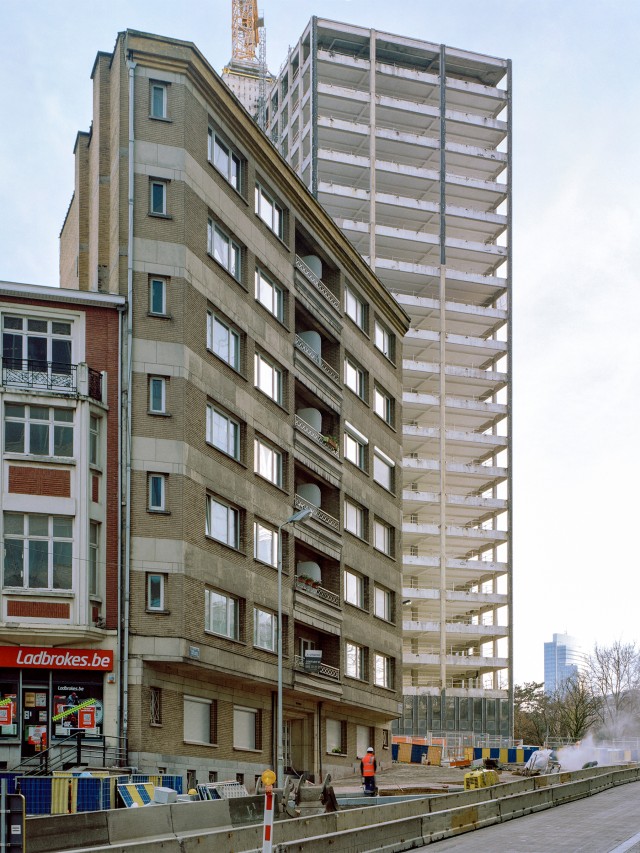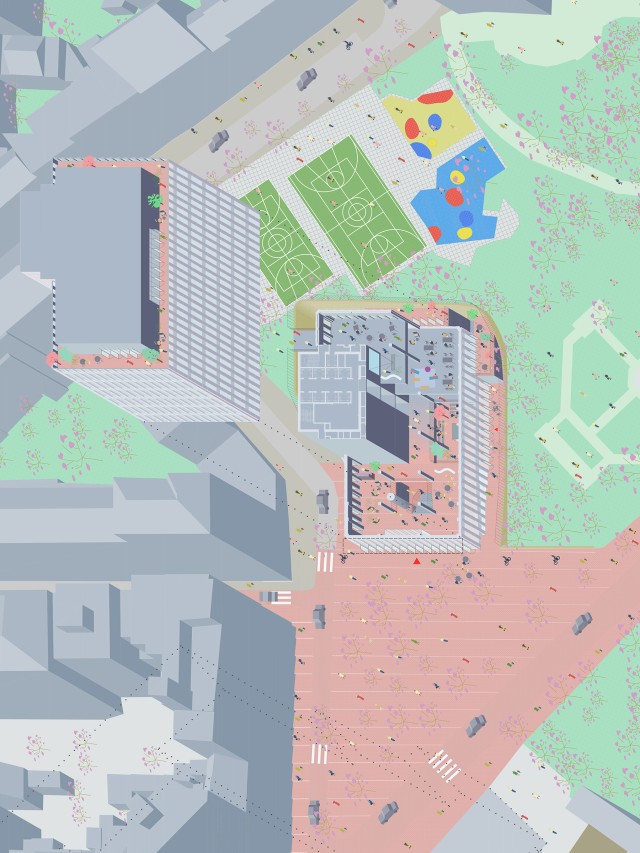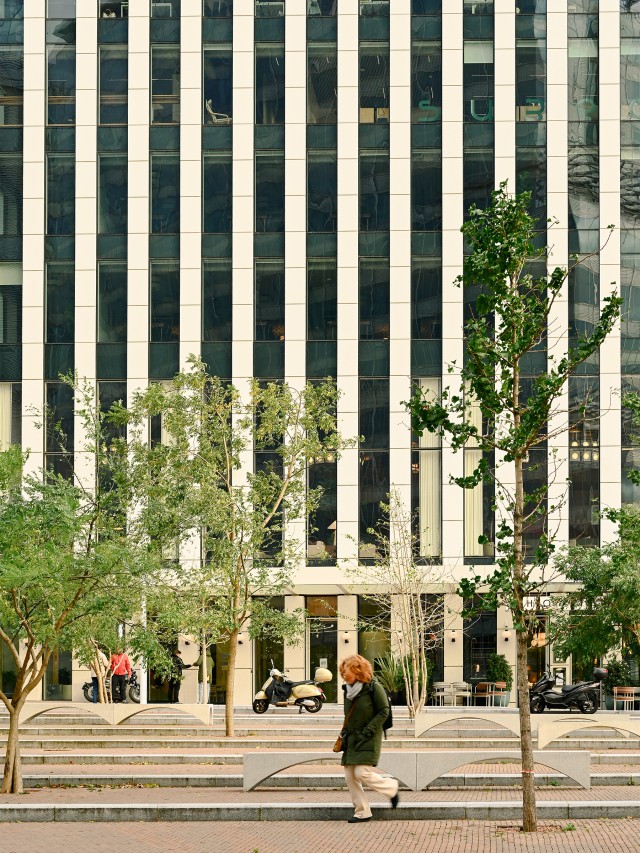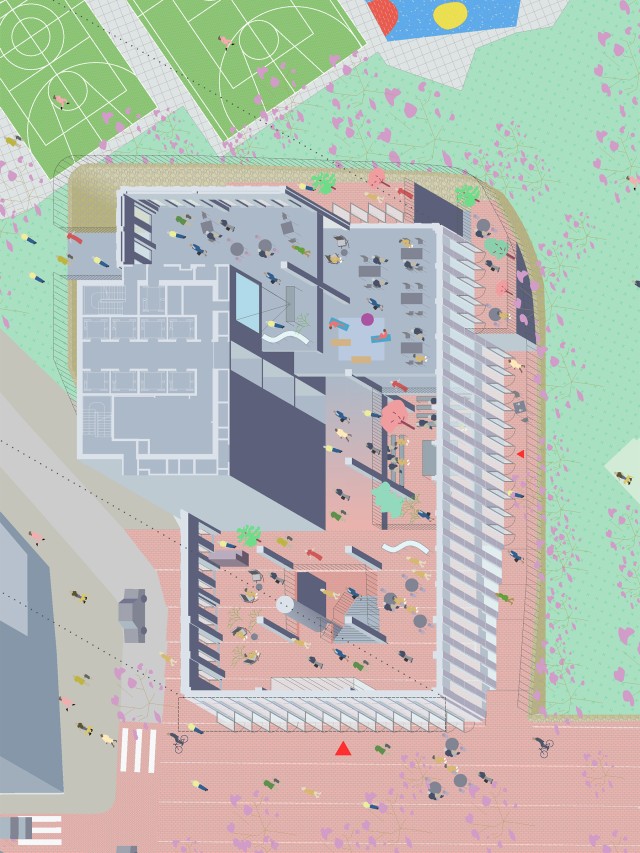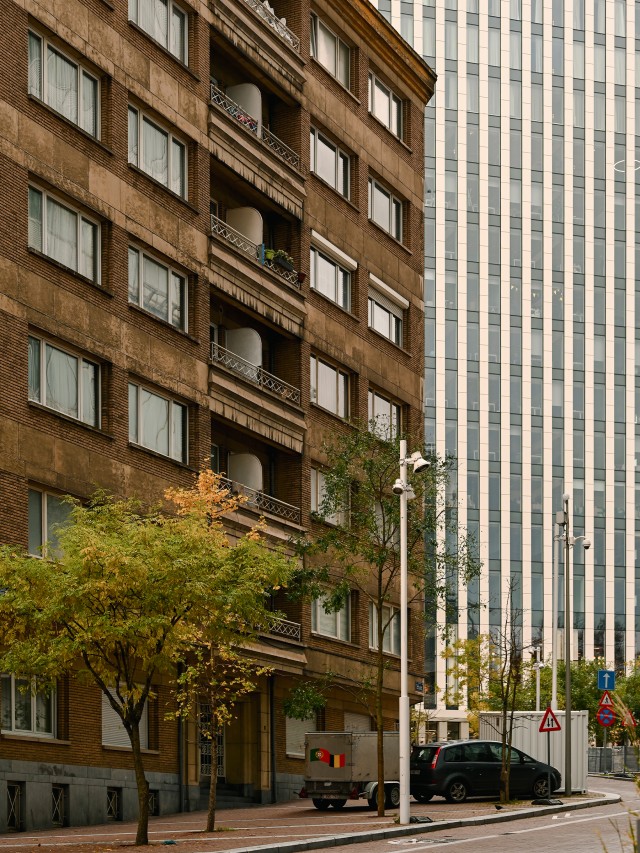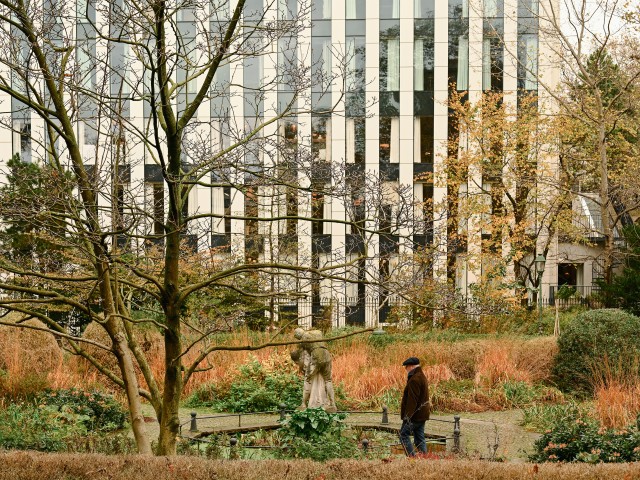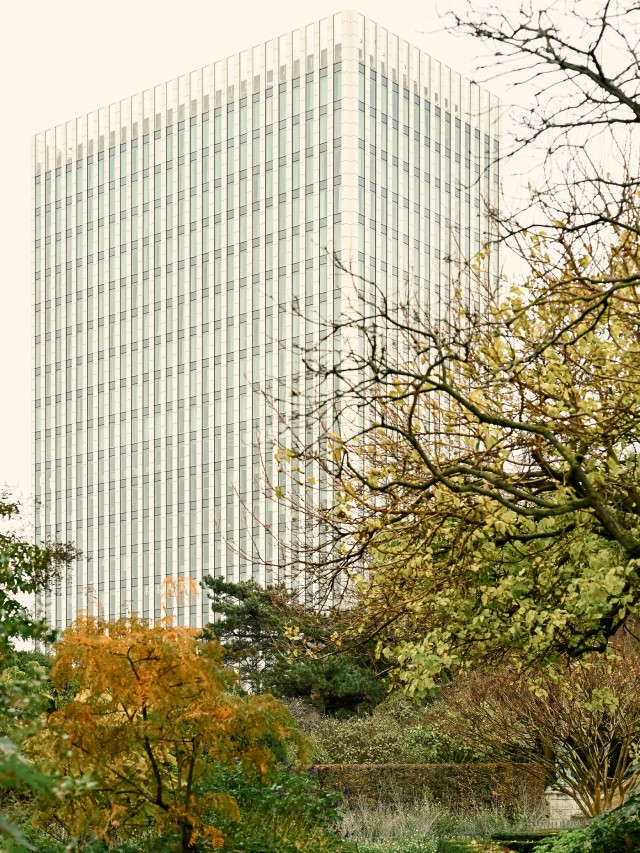Victoria
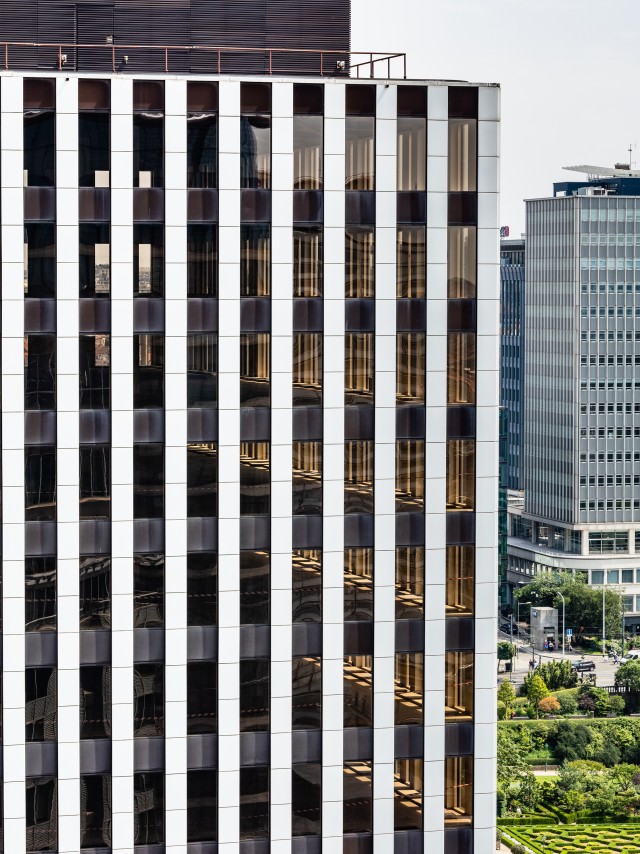
Victoria is a landmark building constructed between 1974 and 1978 as the Belgian headquarters of IBM in the Northern Quarter of Brussels. The emblematic architecture related to the IBM identity is assumed as an archetypical value and therefore serves as the starting point for future development. The refurbishment aspires to transform the existing structure into a hybrid, fossil-free, low-energy building and maximizes the reuse of building materials. As such, the concrete and steel structure is considered as a permanent heritage for future change. Imperfections and the roughness of the concrete structures are kept visible, even in the corporate office spaces.
The building embeds itself in the adjacent residential area by offering specific spatial amenities like a piano nobile, a canopy and outdoor terraces. The interaction with the public space is enhanced by opening up the ground floor towards the square, accessing three entrance lobbies, a bar and the co-working spaces. Embracing visitors, office workers, hotel guests underneath the canopy, the square acts as the ground-floor lobby. The interior fitting of the entrance floor is open to enhance relations and interaction between different users with different purposes. Although privately managed, this intersection of users contributes to the shared public value of the ground-floor space.
Activating the façade, large spaces such as the piano nobile situated above the entrance and other atrium spaces serve as spatial focal areas that provide specific services. These oversized spaces support a wider range of uses such as the informal working and lounge area for the co-working, the main congress room or the hotel lounge. The scale of these spaces can absorb change in the event of future redesigns. The generous free floor height of 2.80 m brings a specific spatial quality that aims for a long-term affinity with users and tenants. The outdoor terraces are small but precious pocket gardens that extend the interior space with yet another type of meeting and working space. The adjacent botanical garden ecologically benefits from the added green species.
The new façade is conditioned by the ambition to allow multiple possible uses at once. On a technical level, it answers to different building conditions and functions. If required, opening window modules can be installed without much effort. Victoria will be a multifunctional building hosting offices, a co-working space, a hotel and a restaurant. Moreover, over time, the new façade will make it possible to organize a different composition of the building programme, bringing extra value to adaptability, longevity, economic and ecologic resources.
-
Location
Brussels, Belgium
-
Client
DOWNTOWN REAL ESTATE/ BALTISSE NV
-
51N4E project team
Johan Anrys, Freek Persyn, Jan Opdekamp, Marta Petrov, Oana Crainic, Wim Menten, Matteo Frangi, Birgitt Use, Stefano Dell’Oro, Anton Parys, Beatrice Armano, Louise Wenger, Laura Chambefort, Pieter Vandekerkhof, Marie-Anne Vandevenne
-
51N4E involvement
full process
-
Structural engineer
CSD
-
Technical engineer
CES
-
Acoustics
De Fonseca
-
Sustainability
Sureal
-
Landscape
Plant en Houtgoed
-
Construction management
CETIM
-
Programme
Co-working, Office, Hotel, Bar, Conference facilities
-
Built surface
25.000 m2
-
Photography
Eric Bouvier, Marta Petrov / 51N4E
-
Image credits
Make me, 51N4E
